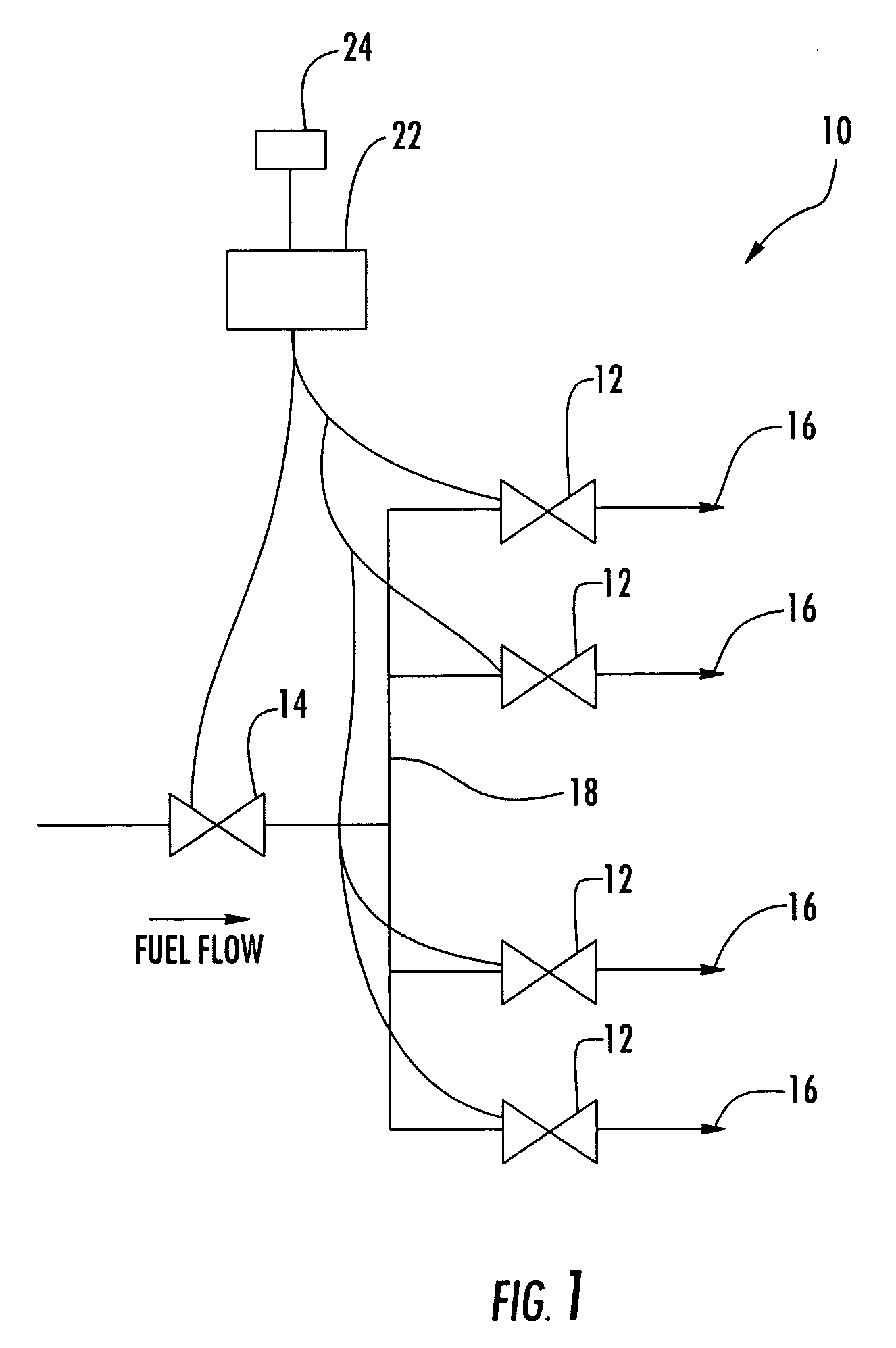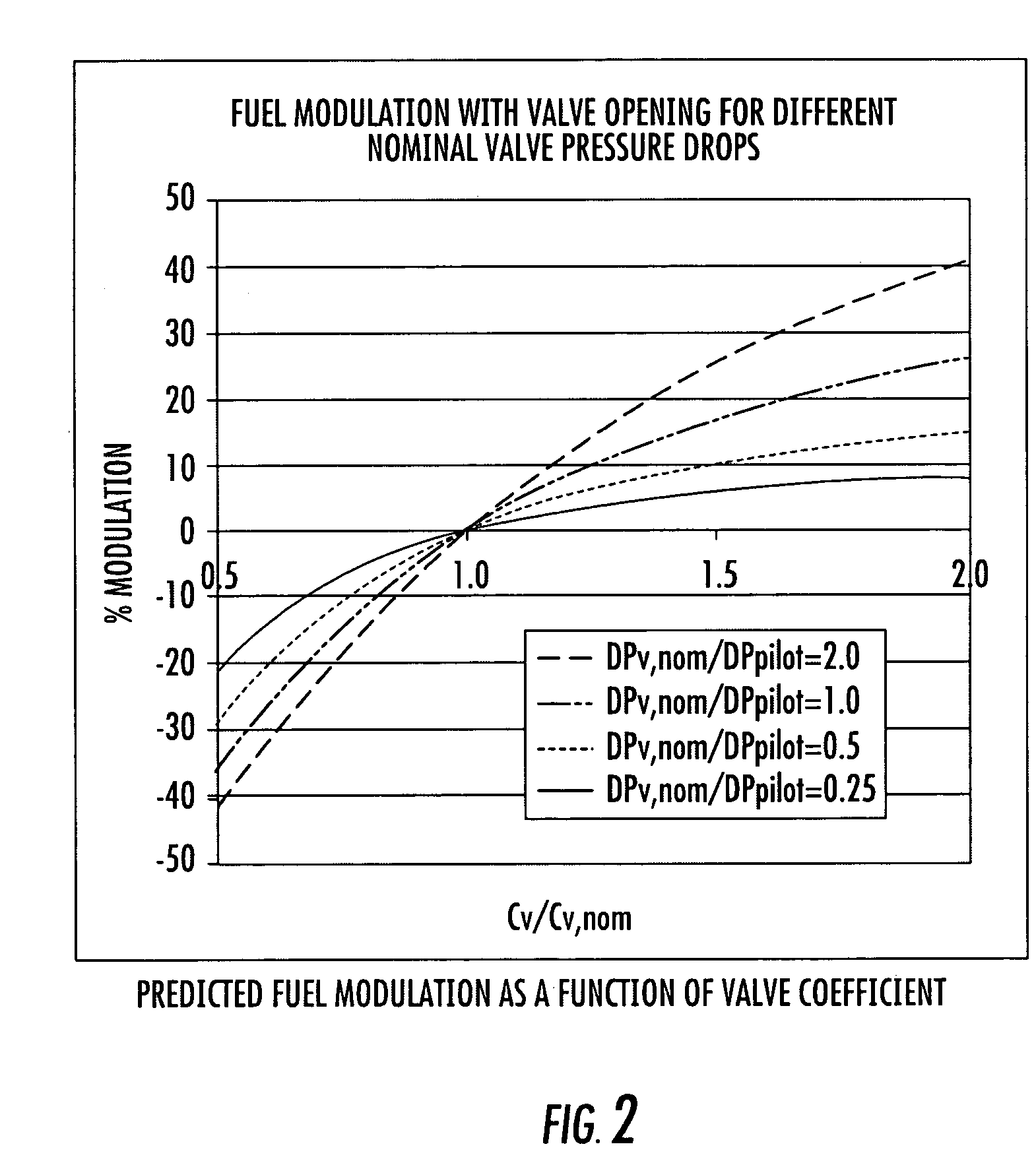System for modulating fuel supply to individual fuel nozzles in a can-annular gas turbine
a canannular gas turbine and fuel supply technology, applied in combustion control, turbine/propulsion engine ignition, lighting and heating apparatus, etc., can solve the problems of unoptimized system, inability to maintain stable combustion in combustor baskets, and unused margins for no/sub>x/sub>optimization, so as to reduce variability, reduce the amount of nox produced, and efficiently manage the fuel flow
- Summary
- Abstract
- Description
- Claims
- Application Information
AI Technical Summary
Benefits of technology
Problems solved by technology
Method used
Image
Examples
Embodiment Construction
[0015]As shown in FIGS. 1-2, the invention is directed to a fuel modulation system 10. The fuel modulation system 10 may be usable in can-annular combustor systems of turbine engines for more efficiently managing fuel flow to reduce the amount of NOx while maintaining appropriate combustor flame temperatures. The fuel modulation system 10 controls individual inline modulation valves 12 in cooperation with a overall stage control valve 14 to bring a turbine engine through the startup phase and to maintain operating conditions at a load set point while reducing NOx variability between baskets by using individual combustor dynamic pressure measurements.
[0016]The fuel modulation system 10 may include a plurality of inline modulation valves 12 positioned inline in individual pilot fuel feed lines between fuel nozzles 16 and a turbine fuel manifold 18. The turbine fuel manifold 18 may be in fluid communication with the fuel nozzles 16 and the overall stage control valve 14. In addition, t...
PUM
 Login to View More
Login to View More Abstract
Description
Claims
Application Information
 Login to View More
Login to View More - R&D
- Intellectual Property
- Life Sciences
- Materials
- Tech Scout
- Unparalleled Data Quality
- Higher Quality Content
- 60% Fewer Hallucinations
Browse by: Latest US Patents, China's latest patents, Technical Efficacy Thesaurus, Application Domain, Technology Topic, Popular Technical Reports.
© 2025 PatSnap. All rights reserved.Legal|Privacy policy|Modern Slavery Act Transparency Statement|Sitemap|About US| Contact US: help@patsnap.com



